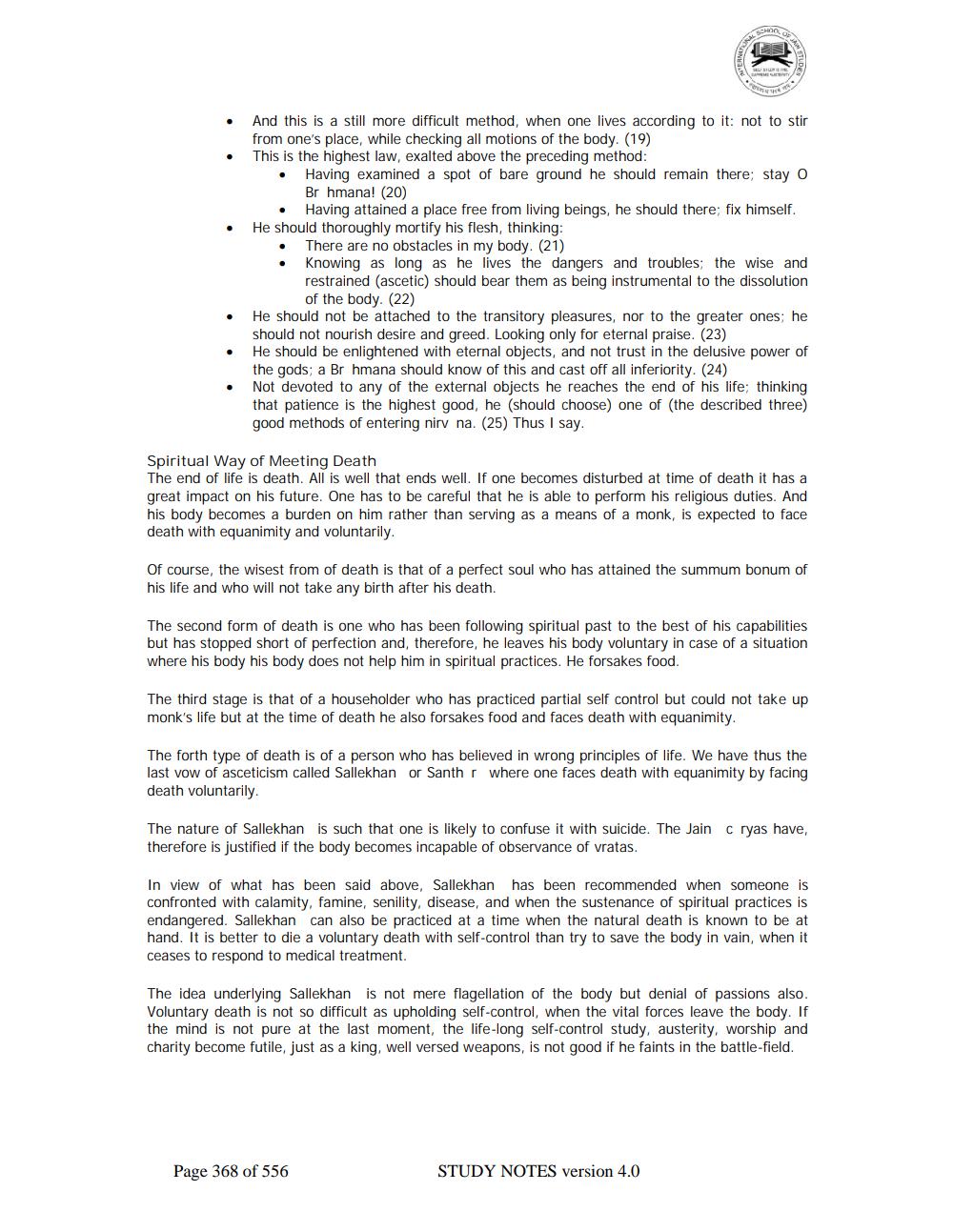________________
And this is a still more difficult method, when one lives according to it: not to stir from one's place, while checking all motions of the body. (19)
This is the highest law, exalted above the preceding method:
⚫
Having examined a spot of bare ground he should remain there; stay O Br hmana! (20)
Having attained a place free from living beings, he should there; fix himself. He should thoroughly mortify his flesh, thinking:
There are no obstacles in my body. (21)
Knowing as long as he lives the dangers and troubles; the wise and restrained (ascetic) should bear them as being instrumental to the dissolution of the body. (22)
He should not be attached to the transitory pleasures, nor to the greater ones; he should not nourish desire and greed. Looking only for eternal praise. (23)
He should be enlightened with eternal objects, and not trust in the delusive power of the gods; a Br hmana should know of this and cast off all inferiority. (24)
Not devoted to any of the external objects he reaches the end of his life; thinking that patience is the highest good, he (should choose) one of (the described three) good methods of entering nirv na. (25) Thus I say.
Spiritual Way of Meeting Death
The end of life is death. All is well that ends well. If one becomes disturbed at time of death it has a great impact on his future. One has to be careful that he is able to perform his religious duties. And his body becomes a burden on him rather than serving as a means of a monk, is expected to face death with equanimity and voluntarily.
Of course, the wisest from of death is that of a perfect soul who has attained the summum bonum of his life and who will not take any birth after his death.
The second form of death is one who has been following spiritual past to the best of his capabilities but has stopped short of perfection and, therefore, he leaves his body voluntary in case of a situation where his body his body does not help him in spiritual practices. He forsakes food.
The third stage is that of a householder who has practiced partial self control but could not take up monk's life but at the time of death he also forsakes food and faces death with equanimity.
The forth type of death is of a person who has believed in wrong principles of life. We have thus the last vow of asceticism called Sallekhan or Santh r where one faces death with equanimity by facing death voluntarily.
The nature of Sallekhan is such that one is likely to confuse it with suicide. The Jain c ryas have, therefore is justified if the body becomes incapable of observance of vratas.
In view of what has been said above, Sallekhan has been recommended when someone is confronted with calamity, famine, senility, disease, and when the sustenance of spiritual practices is endangered. Sallekhan can also be practiced at a time when the natural death is known to be at hand. It is better to die a voluntary death with self-control than try to save the body in vain, when it ceases to respond to medical treatment.
The idea underlying Sallekhan is not mere flagellation of the body but denial of passions also. Voluntary death is not so difficult as upholding self-control, when the vital forces leave the body. If the mind is not pure at the last moment, the life-long self-control study, austerity, worship and charity become futile, just as a king, well versed weapons, is not good if he faints in the battle-field.
Page 368 of 556
STUDY NOTES version 4.0




